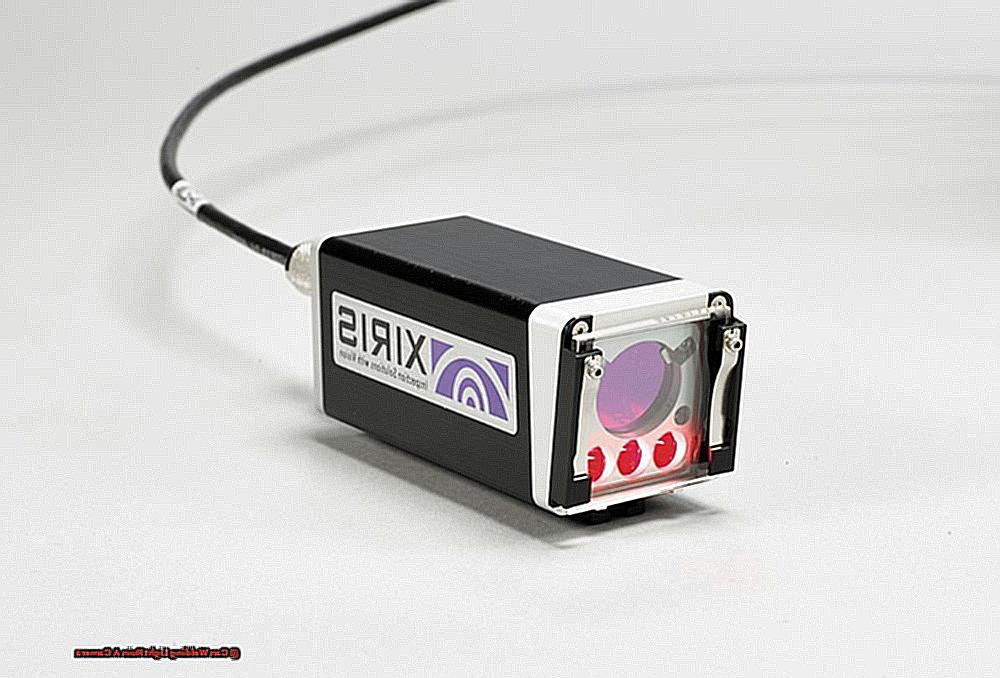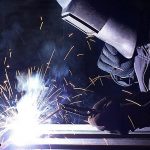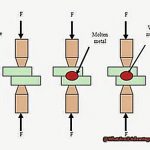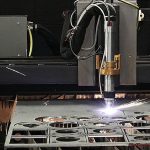Have you ever attempted to snap a picture of someone welding?
If so, you’re likely familiar with the challenge of capturing the blinding, powerful light without ruining the shot. But have you ever considered how that welding light could potentially impact your camera?
From potential damage to sensors to creating one-of-a-kind visual effects, let’s explore the ways in which welding light can influence your photography.
What Happens If You Look At Welding Light
Contents
- 1 What Happens If You Look At Welding Light
- 2 What is Arc Eye?
- 3 What Happens If You Look into a Welding Light
- 4 What Happens If You Accidentally Look At Welding Arc
- 5 What Happens When Looking at a Welding Light From a Distance
- 6 How Long Do You Have to Look at Welding to Get Arc Eye
- 7 Arc Eye Symptoms and Causes
- 8 Welders Flash or Arc Eye Treatment
- 9 Effects of Welding On Eyes
- 10 Effects of Welding Light on the skin
- 11 Bottom Lines
As a welder, one must always prioritize safeguarding their eyes from the intense heat and bright light of welding. However, have you ever considered the potential dangers of gazing at the welding light? While it may appear harmless to sneak a quick peek at the welding arc, it can actually result in severe harm to your precious vision.
The welding arc emits powerful radiation, including ultraviolet (UV) rays, visible light, and infrared (IR) light. This combination of radiation can cause burning, swelling, and inflammation of the cornea, famously known as photokeratitis or arc eye. In some instances, this can even lead to temporary or permanent blindness.
But the hazards of welding light do not end there. Exposure to blue light hazard, a form of high-energy visible light, is also a concern while welding. This can result in macular degeneration, a condition that affects the central region of the retina and can cause irreversible vision loss.
Moreover, extended exposure to welding light can heighten the risk of developing cataracts. Cataracts occur when the lens of the eye becomes cloudy, causing blurry vision and potential blindness. The intense UV radiation emitted during welding can accelerate this process and increase the likelihood of developing cataracts.
However, one may wonder about the safety of cameras in such conditions. Can welding light damage a camera? The answer is affirmative. Similar to our eyes, cameras are also sensitive to light and can easily get harmed by prolonged exposure to bright sources. The intense UV and IR radiation released during welding can potentially damage the sensors and lenses of the camera, resulting in distorted or overexposed images.
So, how does one ensure protection against these potential risks? The first step is always wearing appropriate safety gear, including a welding helmet with a shade that blocks out UV and IR radiation. Not only does this shield your eyes from harm but also prevents any damage to your camera.
What is Arc Eye?
As a welder, one of the most dreaded conditions is arc eye. It’s a painful condition caused by the intense light and heat emitted from a welding arc, which can damage the delicate tissues of the eye. In this section, we’ll delve into the details of what exactly arc eye is, its causes, symptoms, and most importantly, how to prevent it.
So, what exactly causes arc eye? Also known as welder’s flash or photokeratitis, arc eye is caused by exposure to ultraviolet (UV) radiation from a welding arc. This UV radiation is extremely powerful and can easily burn the cornea, which is the outer layer of the eye, as well as damage the retina, which is responsible for vision. And here’s the scary part – this can happen in a matter of seconds. That’s why it’s absolutely crucial to take precautions and protect your eyes at all times while welding.
The symptoms of arc eye can vary in severity, but they typically include a burning sensation in the eyes, redness and watering, blurred vision, sensitivity to light, a gritty feeling in the eyes, headaches, and even temporary loss of vision. These symptoms can appear immediately after exposure or may take several hours to develop. In severe cases, arc eye can even cause permanent damage to the eyes and lead to vision loss.
The good news is that arc eye is entirely preventable if you take proper precautions. So let’s talk about how you can protect your precious eyes while welding. The first and most effective step is to wear a welding helmet with a proper lens shade that blocks out harmful UV and IR rays. Additionally, it’s always a good idea to wear safety glasses underneath for added protection. And finally, never look directly at the welding arc – always shield your eyes with your helmet or safety glasses.
In conclusion, while arc eye may be a well-known and feared condition in the welding world, it’s entirely preventable with the right precautions.
What Happens If You Look into a Welding Light
While this may be a common occurrence, what you may not know is that the light from welding can also pose serious risks to your eyes. In this blog post, we will delve into the potential dangers of looking into a welding light and how you can safeguard yourself.
The bright light emitted from welding contains high levels of UV and IR radiation, which are invisible to the naked eye. This means that you may not even realize that you are being exposed to these harmful rays. However, do not let their invisibility deceive you – overexposure to UV and IR radiation can have severe consequences for your eyes.
Symptoms of overexposure to UV and IR radiation can manifest rapidly, and they are not something to be taken lightly. Temporary or permanent vision impairment is a common risk of staring into a welding light. This can range from mild discomfort and irritation to more serious conditions such as photo keratitis or photokeratoconjunctivitis.
Photo keratitis and photokeratoconjunctivitis are essentially sunburns on the surface of the eye caused by exposure to UV radiation. These conditions present with symptoms such as redness, pain, tearing, and sensitivity to light. They can be extremely uncomfortable and may require medical attention.
However, the risks do not end there. Prolonged exposure to UV radiation can also lead to cataracts – a clouding of the lens in the eye that can result in vision loss if left untreated. Cataracts can develop gradually over time, making it crucial for welders and those who work around welding equipment to protect their eyes from harmful UV radiation.
Retinal burns or damage is another potential hazard of looking into a welding light. The retina is responsible for converting light into signals that are sent to the brain for visual recognition.
What Happens If You Accidentally Look At Welding Arc
As a welder, you are well aware of the importance of protecting your eyes when working with welding arcs. But do you truly understand the potential dangers of accidentally looking at a welding arc without proper eye protection? Let’s delve into the risks and arm you with the necessary knowledge to safeguard your vision.
First and foremost, why is it crucial to use eye protection when working with welding arcs? Welding arcs emit intense light that contains invisible UV and IR radiation. Though these wavelengths are not visible to the naked eye, they can cause serious harm if exposed for an extended period. Exposure to welding arcs without proper eye protection can result in vision impairment, sunburns on the surface of the eye, cataracts, and damage to the retina. These injuries are not only excruciatingly painful but can also lead to permanent loss of vision.
So, what equipment is necessary for adequate eye protection when working with welding arcs? The most common options include UV-protected safety glasses, coated safety goggles, full welder’s masks, auto-darkening helmets, and UV-protected sunglasses or prescription glasses.
UV-protected safety glasses are a cost-effective choice for those who only require basic protection. They come with a special coating that blocks harmful UV light from reaching your eyes. However, they may not provide sufficient coverage for extended periods of welding.

Coated safety goggles offer more coverage and protection than safety glasses. They typically come with indirect ventilation to prevent fogging and a special coating to block UV light. However, they may not be suitable for individuals who wear prescription glasses.
For comprehensive facial coverage, a welder’s mask or helmet is recommended. These devices are specifically designed to shield against intense light from welding arcs. They come with a tinted lens that filters out harmful UV and IR radiation. Some also have adjustable shades to control the amount of light that enters depending on the welding process.
What Happens When Looking at a Welding Light From a Distance
Having years of experience in this field, I understand the significance of taking precautions to ensure the safety and quality of the footage.
When working with welding arcs, it is crucial to wear protective gear to shield yourself from harmful ultraviolet rays. These include UV-protected safety glasses or a full welder’s mask. Not only do these measures protect your eyes, but they also prevent eye strain and fatigue during filming.
Setting up your camera at a safe distance from the welding arc is vital. The intense light emitted can cause overexposure in your footage if you are too close. It is recommended to stay at least 10 feet away from the welding area to avoid any damage to your camera.
Adjusting the camera settings is another essential aspect to consider. Instead of using automatic exposure mode, it is best to switch to manual mode when filming welding. This allows for adjusting the aperture and shutter speed according to the intensity of the light, resulting in high-quality footage.
To further enhance the footage quality, using a neutral density filter can help reduce the brightness of the welding arc without affecting the overall exposure. This is particularly useful for close-up shots, ensuring clear and crisp visuals.
Last but not least, it is crucial to protect your camera lens from the intense light of welding arcs. Extended exposure can cause damage, so it is advisable to use a lens hood or cover it with a UV filter while filming.
In conclusion, while capturing footage of welding may seem daunting, following these precautions and tips can result in top-notch footage without any harm to your equipment. Always prioritize safety and remember these techniques for optimal results.
How Long Do You Have to Look at Welding to Get Arc Eye
As a manufacturing or construction worker, you are well aware of the importance of welding. However, with this vital process comes significant risks that cannot be ignored. One such risk is arc eye, also known as welder’s flash or photokeratitis. This condition is caused by exposure to ultraviolet (UV) rays emitted during welding. But how long does it take for arc eye to develop? Let’s delve into this topic further.
Arc eye can be compared to a sunburn on your eyes. The intense UV rays emitted during welding can damage the outer layer of your eyes, leading to various symptoms such as redness, swelling, sensitivity to light, blurred vision, and a gritty or burning sensation in the eyes. These symptoms may appear within minutes of exposure or take up to 6-12 hours to manifest, depending on the intensity and duration of exposure, as well as an individual’s sensitivity to UV rays.
Although arc eye may seem like a minor inconvenience, prolonged exposure to UV rays can have severe consequences. One of the most significant risks is developing cataracts, a condition where the eye’s lens becomes cloudy, eventually leading to vision loss. Moreover, repeated exposure to UV rays can also increase the risk of developing other eye diseases such as macular degeneration.
The good news is that arc eye is preventable with proper safety measures. The key is to limit your exposure to UV rays by wearing appropriate protective gear, including a welding helmet with a dark shade lens, safety glasses, and face shield. It’s also essential to ensure that your work area is well-ventilated and use screens or curtains to block any stray UV rays.
In conclusion, there is no specific timeframe for arc eye to develop. It depends on various factors such as exposure intensity and duration, individual sensitivity, and safety precautions taken. As Malcolm Gladwell said in his book Outliers, “Practice isn’t the thing you do once you’re good.
Arc Eye Symptoms and Causes
As a skilled welder, your eyes are constantly at risk of being harmed by the hazardous UV radiation emitted from welding arcs. This exposure can cause severe damage to the corneal epithelium, resulting in painful symptoms and potential vision problems. But fear not, with the right knowledge and precautions, you can protect your eyes and prevent the occurrence of “arc eye.”
So what exactly is “arc eye,” you may wonder? It is a condition caused by exposure to UV radiation from welding arcs, which can injure the outer layer of the eye’s cornea. This can lead to a range of symptoms, including redness, tearing, and sensitivity to light. The intensity and duration of exposure can affect the severity of these symptoms, with some cases even resulting in temporary vision loss.
To avoid this, it is crucial to wear proper eye protection while welding. This includes a welding helmet with a lens shade appropriate for the type of welding being performed. For instance, for low amperage welding, a lens shade of 10-12 is recommended, while high amperage welding requires a lens shade of 1Additionally, wearing safety glasses or goggles underneath the helmet provides an extra layer of protection against flying debris.
Proper ventilation in the work area is also essential in preventing arc eye. This reduces the amount of fumes and gases produced during welding, which can be harmful to your eyes. Taking breaks during extended periods of welding and staying hydrated can also help prevent this condition. If you do experience any symptoms after welding, such as redness or discomfort in your eyes, seek medical attention immediately.
Remember, when it comes to protecting your eyes from arc radiation, prevention is always better than cure. Therefore, make sure to follow these safety measures every time you weld and encourage your fellow welders to do the same. Your eyes are invaluable, so don’t take any chances with their protection.
Welders Flash or Arc Eye Treatment
The significance of safeguarding your eyes while performing welding tasks cannot be overstated. Not only can the intense light emitted from welding cause damage to your own eyes, but it can also harm your camera lenses and sensors. In this section, we will delve into the hazards of ultraviolet (UV) rays from welding light and suggest treatments for welder’s flash or arc eye.

While welding light may appear to be a simple bright light, it actually emits potent UV rays that are invisible to the human eye. These UV rays can cause solarization in camera lenses, resulting in murky or distorted images. In extreme cases, the UV rays can even scorch or melt camera equipment. So not only are you putting yourself at risk, but you’re also risking costly damage to your camera.
But what about your eyes? Prolonged exposure to welding light can result in a condition known as welder’s flash or arc eye. This is an excruciating condition where the outer layer of the cornea is damaged, leading to temporary blindness. It’s not something to be taken lightly – trust us, we’ve witnessed it firsthand.
So what can you do to protect yourself and your equipment? The first line of defense is proper eye protection. This includes wearing safety glasses with UV protection or a welding helmet with a suitable shade rating for the type of welding being performed. And let’s not forget about ventilation – adequate ventilation helps decrease the amount of welding light and fumes you are exposed to.
But what if you already have welder’s flash or arc eye? The good news is that it is treatable. The most crucial thing is to give your eyes some rest and avoid further exposure to bright lights. Applying a cold compress or using artificial tears can also provide relief for symptoms such as pain and redness.
In more severe cases, a doctor may recommend over-the-counter pain relievers. However, these treatments only address the symptoms and not the underlying cause.
Effects of Welding On Eyes
As a professional welder, it is imperative to comprehend the potential consequences of welding on your eyes and how to avoid severe eye injuries. The intense light emitted during welding poses a risk not just to your vision, but also to your camera equipment.
The undetectable UV rays can cause solarization in lenses and even result in temporary blindness, making proper eye protection an essential aspect of welding.
So, what exactly are the perils that can affect your eyes during welding? Let’s delve deeper into these hazards.
Glare:
One of the most prevalent dangers that welders encounter is glare. Working with excessively bright tasks or flashes of light can easily strain and fatigue your eyes. This can not only impair your vision, but also lead to headaches and other discomforts. To prevent this, it is crucial to wear eye protection that can minimize the impact of glare.
Allergens:
Welding exposes you to various allergens and irritants that can enter your eyes and cause irritation. These may include fumes, gases, and particles from the materials being welded. For those with allergies or sensitivities, this can be particularly troublesome. Therefore, wearing protective eyewear can shield your eyes from these harmful substances.
Flying Debris:
Another peril that welders face is flying debris. Without proper safety precautions, sparks and debris can easily enter your eyes and cause significant harm. This is why it is crucial to always wear safety glasses or goggles while welding. They can protect your eyes from any particles that may come flying towards you.
Radiation:
Welders are also exposed to infra-red and ultraviolet radiation, which can cause temporary blindness and extreme discomfort. Prolonged exposure over time can lead to permanent vision damage as well. This is why wearing eye protection that safeguards against these types of radiation is crucial.
Aside from safeguarding against hazardous hazards, wearing appropriate eye protection can also prevent long-term damage.
Effects of Welding Light on the skin
Welding is a complex and delicate craft that requires precision, skill, and above all, safety. As a fellow welder, I am well acquainted with the potential hazards of welding light on the skin and the utmost importance of safeguarding oneself. In this blog post, I will share my expertise and personal experience on this topic to educate my fellow welders on the effects of welding light on the skin and how to protect themselves.
As professionals in the trade, welders are constantly exposed to high levels of ultraviolet (UV) and infrared (IR) radiation emitted during the welding process. These invisible rays can have severe consequences on the skin, including sunburn, premature aging, and an increased risk of skin cancer.
Our skin is our first line of defense against these harmful rays, and when left unprotected, it can lead to significant damage.
One of the most common impacts of welding light on the skin is sunburn. When required safety measures are not taken, welders are at risk of developing a sunburn-like reaction on their skin. This can result in redness, swelling, pain, and even blisters in severe cases. Prolonged exposure to welding light can also accelerate aging of the skin, causing wrinkles and sagging.
Moreover, welders face a higher risk of developing skin cancer due to their constant exposure to UV and IR radiation. A study by the American Cancer Society found that welders are more likely to develop squamous cell carcinomas compared to the general population. This type of skin cancer often manifests as scaly patches or sores on areas exposed to sunlight such as the face, neck, and hands. Furthermore, prolonged exposure to IR radiation has been linked to an increased risk of melanoma, the deadliest form of skin cancer.
Now you may be wondering, what can welders do to safeguard themselves from these harmful effects? The most effective solution is to wear proper personal protective equipment (PPE).
Bottom Lines
As a seasoned welder, safety is our top priority in this field. We take all necessary precautions to shield ourselves from the scorching heat, blazing sparks, and noxious fumes produced by welding machinery. However, have you ever considered the potential dangers of welding light on your camera?
Exposing your camera to welding light without proper protection can result in irreversible harm, leading to malfunction or complete breakdown. Furthermore, it can also pose physical risks to your camera’s lens and sensor, significantly impacting image quality. In this section, we will delve into the best practices for ensuring the safety and optimal functioning of your camera while working with welding equipment.
The main threat of exposing a camera to welding light is the possibility of overheating. The intense levels of infrared radiation and ultraviolet (UV) light emitted during welding can drastically increase the temperature of a camera’s internal components. This can cause malfunctions, shut down the camera, or even spark a fire. Additionally, the intense light can also cause thermal stress on the camera’s lens and sensor, resulting in cracks or warping that can severely affect image quality.
But it’s not just heat that we need to protect our cameras from; welding fumes can also pose a hazard. These hazardous gases and particles can corrode electronic components over time, inflicting permanent damage. Moreover, they can deposit on the lens or sensor, causing scratches and other physical harm that can mar image clarity.
So what measures can we take to safeguard our cameras from these perils? The initial step is to keep your camera at least 35 feet away from the welding activity. This distance reduces exposure to intense light and heat significantly.
Another effective way to shield your camera from welding light is by using specialized filters or lenses. These filters are designed to block out harmful UV and infrared radiation while still allowing visible light to pass through.





